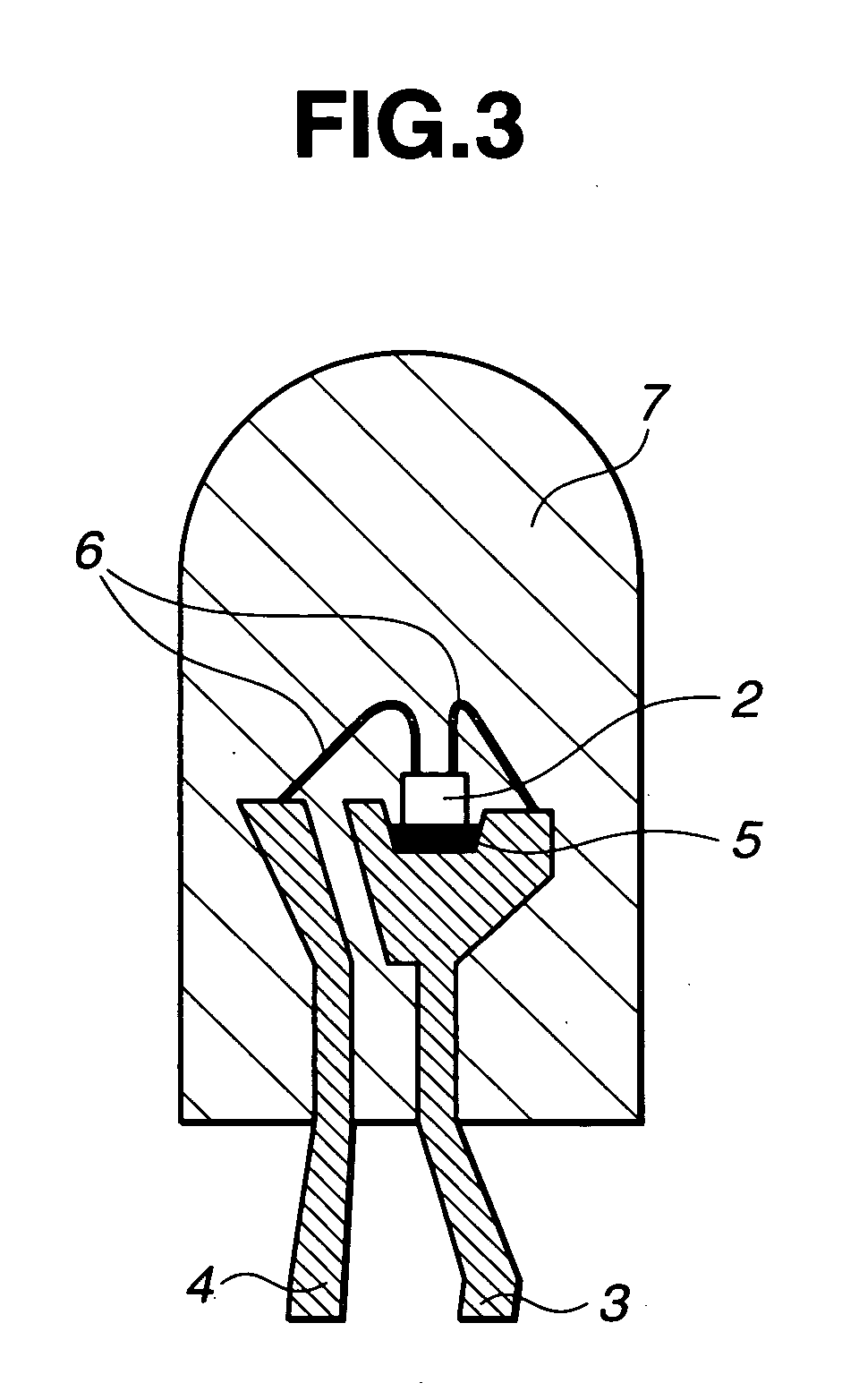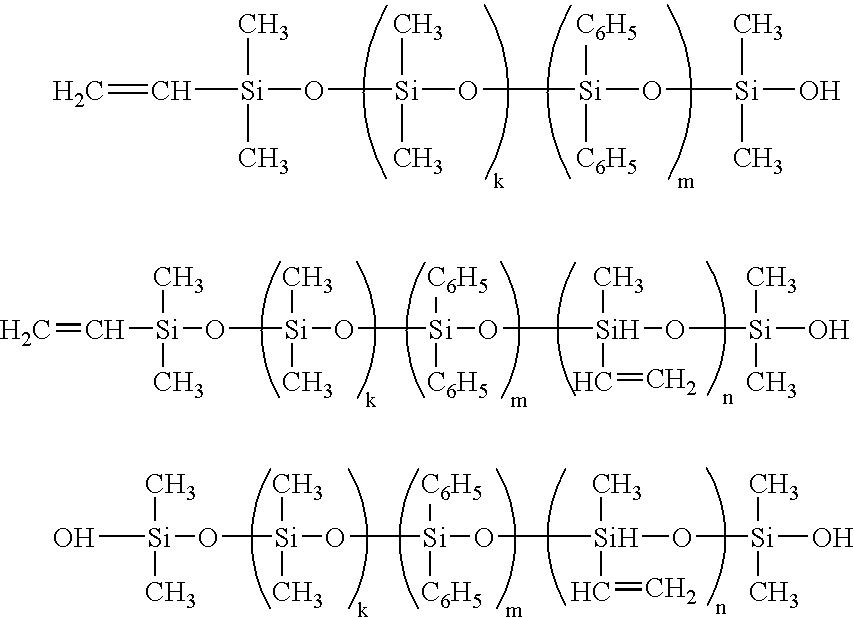Epoxy/silicone mixed resin composition and light-emitting semiconductor device
a technology of mixed resin and semiconductor devices, which is applied in the direction of synthetic resin layered products, transportation and packaging, chemistry apparatuses and processes, etc., can solve the problems of poor durability to moisture, poor adhesion of epoxy resins, poor light transmission efficiency, etc., and achieve high emission efficiency, impact resistance and light transmittance. , the effect of improving adhesion
- Summary
- Abstract
- Description
- Claims
- Application Information
AI Technical Summary
Benefits of technology
Problems solved by technology
Method used
Image
Examples
example
[0064] Examples of the invention are given below by way of illustration and not by way of limitation. All parts are by weight. Me is methyl, Vi is vinyl, and Ph is phenyl. The viscosity is a measurement at 25° C.
[0065] First described are tests for evaluating embedding / protecting materials of Examples and Comparative Examples.
example 1
[0071] An epoxy / silicone mixed resin composition was prepared by combining 50 parts of a polysiloxane having formula (i), 30 parts of an organopolysiloxane having a siloxane unit composition (molar ratio) of (PhSiO3 / 2)0.6(MeSiO3 / 2)0.2(ViMeSiO2 / 2)0.2 and containing 8% by weight of silicon atom-bonded hydroxyl groups, 20 parts of a bisphenol A epoxy resin, 5 parts of an organohydrogenpolysiloxane having formula (ii), 0.3 part of an adhesive aid having formula (iii), 0.05 part of an octyl alcohol-modified chloroplatinic acid solution, and 0.1 part of aluminum acetylacetonate and intimately mixing them.
[0072] The composition was heat molded at 150° C. for 4 hours to form a cured sample, which was measured for Shore D hardness according to JIS K-6301. The composition which had been cured at 150° C. for 4 hours was colorless and transparent.
[0073] Using the resin composition, a light-emitting semiconductor device was fabricated as above.
example 2
[0074] An epoxy / silicone mixed resin composition was prepared by combining 80 parts of an organopolysiloxane having a siloxane unit composition (molar ratio) of (PhSiO3 / 2)0.6(MeSiO3 / 2)0.2(ViMeSiO2 / 2)0.2 and containing 8% by weight of silicon atom-bonded hydroxyl groups, 20 parts of a bisphenol A epoxy resin, 5 parts of an organohydrogenpolysiloxane having formula (ii), 0.3 part of an adhesive aid having formula (iii), 0.05 part of an octyl alcohol-modified chloroplatinic acid solution, and 0.1 part of aluminum acetylacetonate and intimately mixing them.
[0075] The composition was heat molded at 150° C. for 4 hours to form a cured sample, which was measured for Shore D hardness according to JIS K-6301. The cured sample was colorless and transparent.
[0076] Using the resin composition, a light-emitting semiconductor device was fabricated as above.
PUM
| Property | Measurement | Unit |
|---|---|---|
| viscosity measurement | aaaaa | aaaaa |
| viscosity measurement | aaaaa | aaaaa |
| molar ratio | aaaaa | aaaaa |
Abstract
Description
Claims
Application Information
 Login to View More
Login to View More - R&D Engineer
- R&D Manager
- IP Professional
- Industry Leading Data Capabilities
- Powerful AI technology
- Patent DNA Extraction
Browse by: Latest US Patents, China's latest patents, Technical Efficacy Thesaurus, Application Domain, Technology Topic, Popular Technical Reports.
© 2024 PatSnap. All rights reserved.Legal|Privacy policy|Modern Slavery Act Transparency Statement|Sitemap|About US| Contact US: help@patsnap.com










